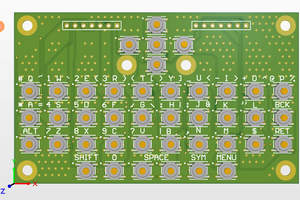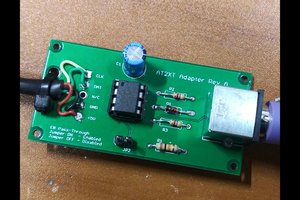My goal is to create a completely wireless keyboard using Qi wireless charging and a bluetooth controller.
A secondary goal of the project is to keep the Planck with fully functional wired capabilities. I don't want to have to remove a fuse as seen in previous Planck bluetooth projects.
In order to maintain resell value, the bluetooth addition should be able to be desoldered and the keyboard still function as normal.
This goal, combined with the goal to keep the case as thin as possible, has lead me to the design restriction that, when in the case, the bluetooth battery will only be chargeable wirelessly. This goal also lead to the design decision to utilize a diode to prevent shorting out the board when the board is in wired mode.
One coding aspect I haven't yet figured out is if it's possible to connect the keyboard to multiple devices (and if so, adding keyboard shortcuts to do so). I know some bluetooth keyboards on the market can already do this so I'm interested in seeing how it's done.
A design aspect I haven't yet figured out is if I will have to raise the keyboard PCB in the case in order to fit the battery and bluetooth controller. Most of the pieces are maximum 8mm tall.
Furthermore, because the keyboard I bought for this project was a custom build, the bottom plate is aluminum. This will obviously not work well with inductive charging. The two design options I'm considering are putting the wireless charger on the outside of the case or using the EOTW bottom plate. Because the Qi receiver I plan on using is very thin, this would work well and allow for a minimal distance between the inductive charger and transmitter.
The other option is to use a different, plastic bottom plate. This would allow for a more seamless exterior; however, the inductive charging would be less efficient.
 Alex K
Alex K




 Grégory Paul
Grégory Paul
 Dave's Dev Lab
Dave's Dev Lab
 Anton S
Anton S
please put small monochrome screen, any fuzix cpu and power inside.
many people no needed more than cc and vi ;D